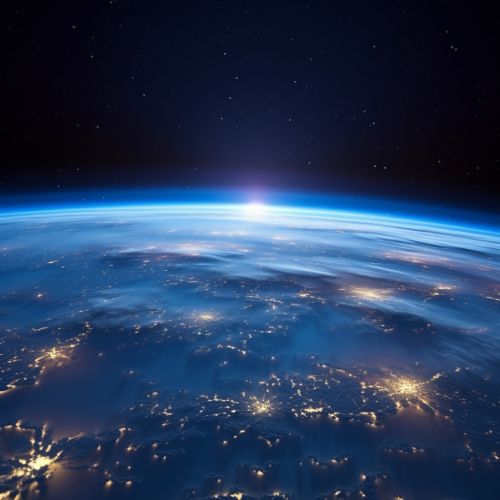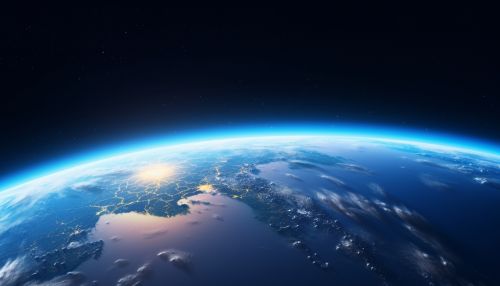Stratospheric Ozone Depletion
Introduction
Stratospheric ozone depletion refers to the phenomenon of the decrease in the amount of ozone in the stratosphere of the Earth. The stratosphere, the second major layer of Earth's atmosphere, is the area where the majority of atmospheric ozone is found. Ozone is a molecule composed of three oxygen atoms, and it plays a crucial role in blocking the majority of the Sun's harmful ultraviolet radiation from reaching the Earth's surface.


Causes of Ozone Depletion
The primary cause of stratospheric ozone depletion is the release of certain man-made chemicals, most notably chlorofluorocarbons (CFCs), halons, carbon tetrachloride, and methyl chloroform. These substances contain chlorine and bromine atoms, which can catalyze the destruction of ozone when they reach the stratosphere. The process of ozone depletion involves complex chemical reactions that occur on the surfaces of particles in polar stratospheric clouds (PSCs).
Chlorofluorocarbons (CFCs)
CFCs are a type of compound that was widely used in the 20th century in various applications, including as refrigerants, aerosol propellants, and in air conditioning systems. When these substances are released into the atmosphere, they can remain intact for a long time due to their stability, allowing them to reach the stratosphere. Once in the stratosphere, CFCs are broken down by solar radiation, releasing chlorine atoms.
Halons
Halons are another group of compounds that contribute to ozone depletion. They are similar to CFCs but contain bromine atoms instead of chlorine. Halons were primarily used in fire extinguishers due to their ability to stop the spread of fire without leaving residues. Like CFCs, halons can reach the stratosphere and release bromine atoms when they are broken down by solar radiation.
Carbon Tetrachloride and Methyl Chloroform
Carbon tetrachloride and methyl chloroform are two other substances that have contributed to ozone depletion. Carbon tetrachloride was used in fire extinguishers and as a precursor in the production of CFCs, while methyl chloroform was used as an industrial solvent. Both of these substances can release chlorine atoms in the stratosphere.
Effects of Ozone Depletion
The depletion of stratospheric ozone has several significant effects, both on the environment and on human health. The most direct effect is an increase in the amount of harmful ultraviolet-B (UV-B) radiation that reaches the Earth's surface. This can lead to a higher incidence of skin cancer and cataracts in humans, as well as harmful effects on ecosystems, particularly in aquatic environments where UV-B radiation can damage the phytoplankton that forms the basis of the food chain.
Ozone Depletion and Climate Change
While stratospheric ozone depletion and global climate change are two distinct issues, they are interconnected in several ways. Changes in climate can influence the rate of ozone depletion, while changes in stratospheric ozone can affect the temperature structure of the atmosphere, influencing climate patterns.
Mitigation Efforts
In response to the discovery of the ozone hole in the 1980s, the international community took action to phase out the production of CFCs, halons, and other ozone-depleting substances. The Montreal Protocol on Substances that Deplete the Ozone Layer, signed in 1987, has been effective in reducing the global production of these substances.
